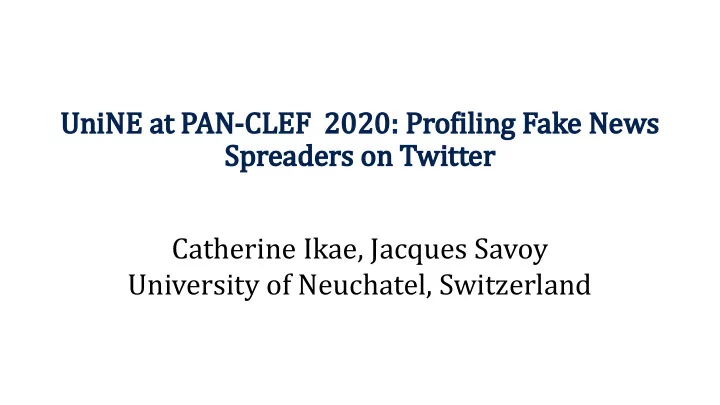

UniNE at PAN-CLEF 2020: Profiling Fake News Spreaders on Twitter Catherine Ikae, Jacques Savoy University of Neuchatel, Switzerland
The Task Task: Given a Twitter feed, determine whether its author is keen to be a spreader of fake news. • Languages: English and Spanish • Genres: Twitter feeds Training Testinging
The Method ● unique vocabulary (VocUnC1, VocUnC2) belonging to the two categories (PtC1, PtC2) is determined by probD ● chi-square method was selected to reduce the feature space to a few hundred terms ● The documents belonging to two Categories are represented as vectors using a reduced set of features ● A classifier is implemented combining decision tree, random forest, and boosting as shown below
The Method (probD + chi2)
Evaluation with features ranked by chi2 values
TIRA results and conclusion • Our feature selection technique is able to extract a reduced set of features upto 150. • it is possible to identify those features more associated to normal tweets (e.g., I, this, film, review, episode, etc.) from tweets spreading fake news, (names of political leaders, says, post, president, she, he, democrat, etc) • our analysis indicates that tweets containing fake news tend to include more references (URL) to other webpages than normal tweets, references used to support the misinformation or to justify some conspiracy theory. On the other hand, normal tweets present more retweets and hashtags. • our attribution approach is based on a model combining three individual attributions computed by a decision tree, a boosting, and a random forest classifier
Recommend
More recommend